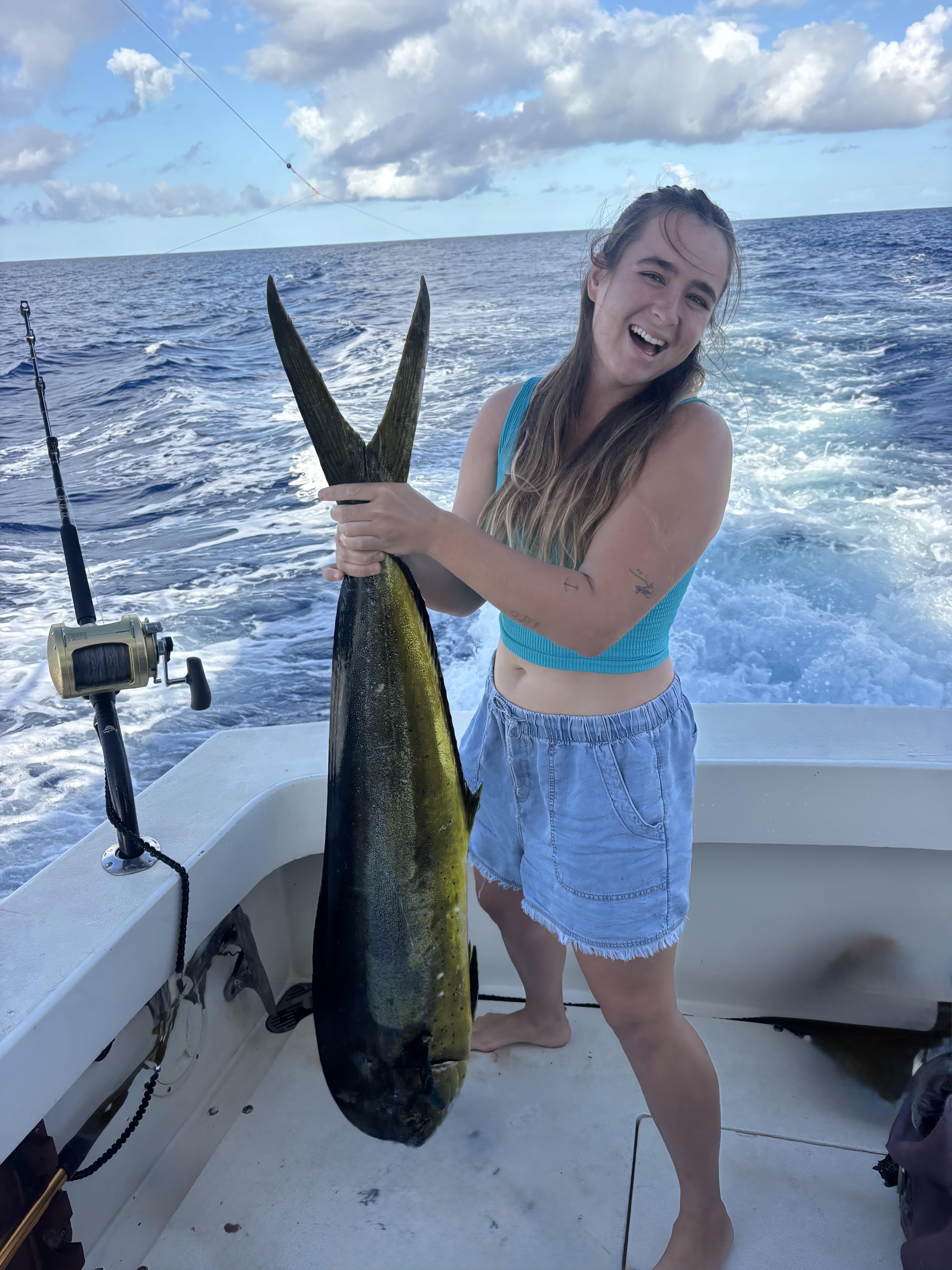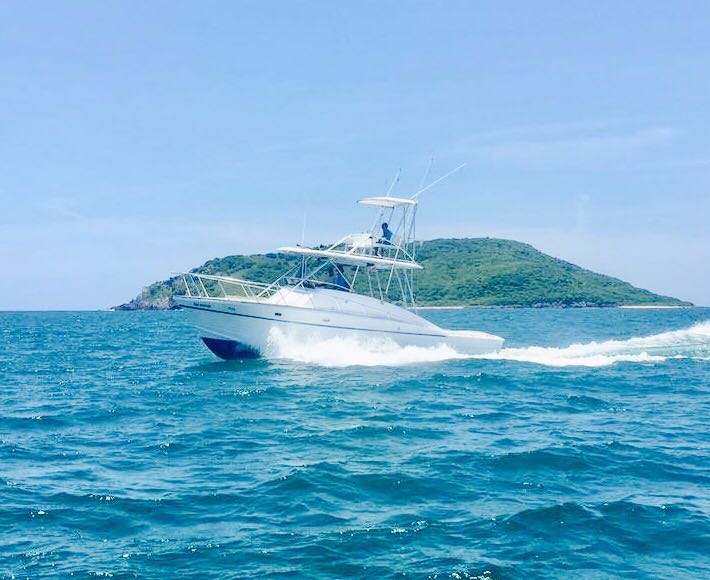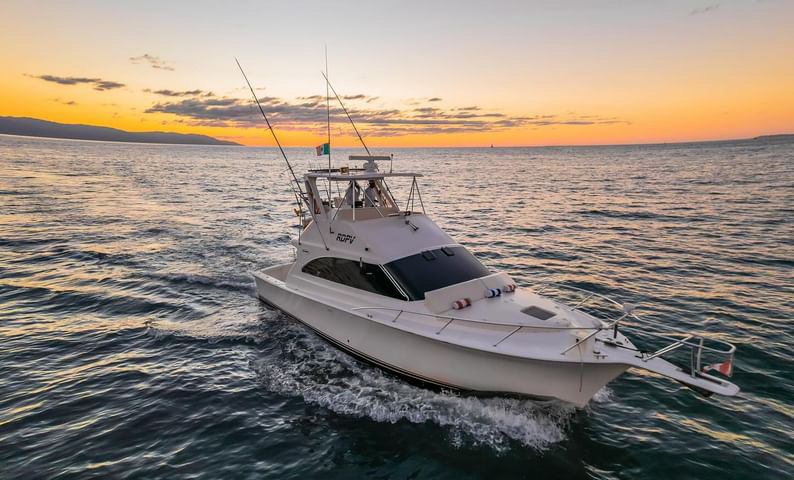Deep Sea Fishing in Kailua-Kona
Half Day Charter 4 Hours
Deep Sea Fishing in Playa Herradura
Half Day Offshore
VIP SPORTFISHING & OCEAN SKEET
Mazatlan - Offshore Fishing, Mexico
Inshore, Deep Sea Fishing in Cruz de Huanacaxtle
Luxury 40 Ft Yacht La Cruz
Deep Sea Fishing in Puerto Vallarta
31 Ft Grady White Deep Sea Fishing
Deep Sea Fishing in Corral del Risco
Punta Mita Fishing Charter
BIG GAME FISHING IN MAZATLAN, MEX
Deep Sea Fishing in Nuevo Nayarit
Big Game Fishing Nuevo Vallarta
Inshore, Deep Sea, Nearshore in Playa Flamingo
5/7 Hrs Offshore Or Inshore Fishing
We started Captain Experiences to make it easy to book fishing and hunting guides around the world. With over 2,000 Damn Good Guides, our platform makes finding and booking a trip seamless. Head here to check out our trips.
What is Captain Experiences?
We’re on a mission to Unlock the Outdoors for everyone. With thousands of Damn Good Guides across the US and beyond, our platform makes booking quality, vetted guides quick and easy.
Check out our tripsIn looking at the top speeds of various ocean fish, two things have become clear. First, these fish are strong and incredibly powerful creatures. Second, measuring the top speed of a fish is no easy task.
Across all of the remarkable accounts of fish on the run, the various methods for calculating the speed of a fish are inconsistent, and reported speeds for various species vary widely.
In many cases, speed was calculated based on the rate at which a fish took line off a reel. While this does have some inherent issues, it is one of the most consistent methods for getting this data, but just be sure to take the exact numbers with a grain of salt. Here are five of the fastest fish in the ocean.

5. Bonefish
Bonefish, sometimes called just “bones” or “gray ghosts,” are elusive fish that are highly regarded by anglers for their difficulty to catch. They have silver sides with slightly darker gray to olive-green backs, stripes down their side, and have a very streamlined body.
This body shape helps them to reach speeds of up to 40 miles per hour, helping them to evade predators and to run out your line in a matter of seconds. They also have lung-like air bladders, which help them to tolerate shallower water with less oxygen, and are very sensitive to noise.
4. Tuna
Yellowfin are identifiable from other tuna species by their distinct second dorsal and anal fins. These long sickle shaped fins are bright yellow and extend from their bodies in dramatic fashion. In mature fish, these can extend quite a ways, reaching back almost to the tail. Yellowfin tuna are large fish that can reach over 300 pounds.
Bluefin Tuna are the largest of all the tuna species. They are torpedo-shaped, strong, and fast swimmers and are dark blue, fading to silver on their bellies. The average bluefin lives for about 15 years, growing to an average of 78 inches long and around 500 pounds. However, they can grow up to 180 inches long and almost 1,500 pounds during their 50-year life span.
There have been disagreements about which one of these two species of tuna is the fastest, but their top speeds max out at 43 miles per hour.
3. Wahoo
Nicknamed the “Texas Torpedo”, wahoo are an angler favorite around the world. These fish grow to over 4 feet long and are ferocious eaters. Wahoo are more than capable of crushing lures being trolled at high speeds. While these fish typically weigh only 25 pounds, they grow to well over 50 pounds.
The explosive bite and scorching runs make them formidable sport fish. Their impressive length is what gives them their speed, topping out at 48 MPH. Aside from their fight, their white, flaky meat is firm, clean, and makes for a delicious meal.
2. Marlin
Marlin are some of the most sought after trophy fish for anglers around the world. Their size, strength, and elusive behavior will test the skills, endurance, and mind of any angler. These fish weigh hundreds and sometimes thousands of pounds and are better measured in feet than inches. These behemoth predators require the heaviest of tackle and are often considered the ultimate sportfish.
Reeling in a marlin is made even more difficult due to their ability to reach speeds of up to 50 miles per hour. It's safe to say that trying to land a fish that weighs hundreds of pounds and can swim at highway speeds is going to be the fight of a lifetime.

1. Sailfish
With its large dorsal fin stretching along its back, the sailfish is one of the most recognizable billfish. Known as the cheetah of the ocean, they are one of the fastest marine creatures alive. Sailfish are capable of swimming at speeds of up to 68 miles per hour, making them highly prized by anglers despite being one of the smaller species of billfish.
Other distinguishing characteristics of sailfish are their blue to gray coloring and elongated bill, and these colors will change into rust color and even black while hunting. There are two types of sailfish—the Pacific Sailfish and the Atlantic Sailfish—who reside in the Pacific and Atlantic oceans.
Joey Butrus
Updated on July 28, 2023

November 15, 2023

November 7, 2023

April 26, 2022

July 31, 2024

July 1, 2024
Related Articles
June 13, 2022
February 28, 2022
January 3, 2022
Featured Locations
- Fishing Charters Near Me
- Austin Fishing Guides
- Biloxi Fishing Charters
- Bradenton Fishing Charters
- Cabo San Lucas Fishing Charters
- Cancun Fishing Charters
- Cape Coral Fishing Charters
- Charleston Fishing Charters
- Clearwater Fishing Charters
- Corpus Christi Fishing Charters
- Crystal River Fishing Charters
- Dauphin Island Fishing Charters
- Daytona Beach Fishing Charters
- Destin Fishing Charters
- Fort Lauderdale Fishing Charters
- Fort Myers Fishing Charters
- Fort Walton Beach Fishing Charters
- Galveston Fishing Charters
- Gulf Shores Fishing Charters
- Hatteras Fishing Charters
- Hilton Head Fishing Charters
- Islamorada Fishing Charters
- Jacksonville Fishing Charters
- Jupiter Fishing Charters
- Key Largo Fishing Charters
- Key West Fishing Charters
- Kona Fishing Charters
- Lakeside Marblehead Fishing Charters
- Marathon Fishing Charters
- Marco Island Fishing Charters
- Miami Fishing Charters
- Montauk Fishing Charters
- Morehead City Fishing Charters
- Naples Fishing Charters
- New Orleans Fishing Charters
- New Smyrna Beach Fishing Charters
- Ocean City Fishing Charters
- Orange Beach Fishing Charters
- Panama City Beach Fishing Charters
- Pensacola Fishing Charters
- Pompano Beach Fishing Charters
- Port Aransas Fishing Charters
- Port Orange Fishing Charters
- Rockport Fishing Charters
- San Diego Fishing Charters
- San Juan Fishing Charters
- Sarasota Fishing Charters
- South Padre Island Fishing Charters
- St. Augustine Fishing Charters
- St. Petersburg Fishing Charters
- Tampa Fishing Charters
- Tarpon Springs Fishing Charters
- Venice Fishing Charters
- Virginia Beach Fishing Charters
- West Palm Beach Fishing Charters
- Wilmington Fishing Charters
- Wrightsville Beach Fishing Charters


































